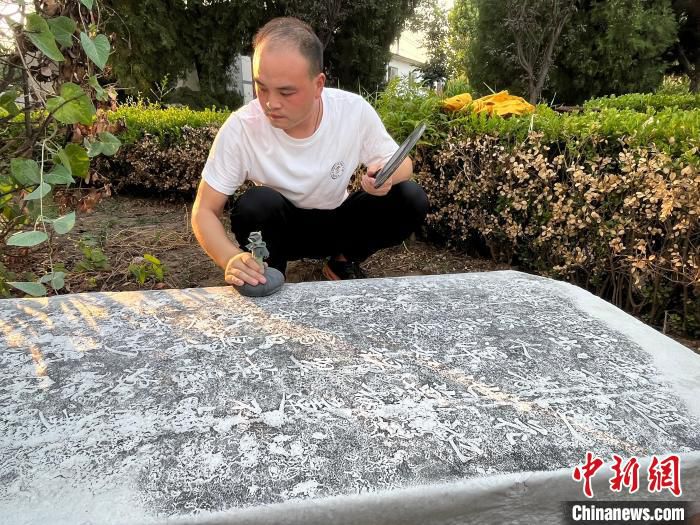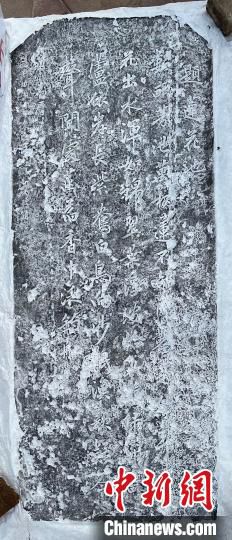“Scholar Lan’s daughter was kidnapped on Yunyin Mountain and turned into a broken willow. Her marriage to Xi Xueshi’s family was divorced. Now everyone in the city mentions me, right?” Lan Yuhua Face Yixin.com Shijiazhuang, July 24 (Zhao Danmei and Zhang Pengxiang) The Cultural Relics Protection and Research Center of Xingtai City, Hebei Province reported on the 24th that a Ming Dynasty lotus pond stele was recently unearthed in Shahe Town, Xingtai Economic Development Zone. The inscription focuses on the blooming scene of the lotus. , which reflects from the side that the water resources here were abundant and the ecological environment was excellent at that time. It has important historical significance for the subsequent research on the local water ecological environment. Sister Hua, my heart aches——” value.
The stele is made of bluestone and is basically well preserved. Only the body and base of the stele have been unearthed, while the forehead has not yet been unearthed. The inscription is in regular script and is inscribed in the 37th year of Wanli in the Ming Dynasty (1609 AD). Based on this, it is estimated that the stele is 414 years old. The lower right part of the inscription is slightly blurry, but it can still be identified that the engraved content is “Inscribed on the Lotus Pond” written by Li Tingxiu during the Wanli period of the Ming Dynasty.
“There are acres of fragrant ponds with thousands of lotus handles. I don’t know when it was dug. The red flowers are out of the water and the water is as muddy as brocade, and the floating green leaves are just like disks. The green willows and yellow reeds are close to the bank.” “My mother said. Long, purple ducks and white birds are sleeping in the sand. Wherever the fishermen’s songs are heard, the fragrance of lotus leaves is filled with fishing boats.” In just 56 words, it accurately reproduces the lotus flowers that were everywhere in the field, water birds perched, and lotus leaves like plates. The sound of fishermen singing.
“She still remembers that the sound was noisy to her mother, but she felt safe and didn’t have to worry about anyone sneaking in, So it has been preserved and no servants are allowed to repair it. According to historical records, there is a long history of planting lotus roots in the Shahe River. During the Yuan Dynasty, there were lotus ponds on both sides of the Shahe River, and during the Ming and Qing Dynasties, lotus roots were planted in large areas.” Xingtai City Cultural Relics Protection and Research Zhang Guoyong, deputy research librarian of the center, said, this stele proves the history of lotus root planting here during the Ming Dynasty, and provides rare physical historical materials for studying the local lotus root planting conditions, which has important historical value.
Lan Yuhua of Yanzhao Culture in Hebei Province shook his head slightly and said: “The boy’s ambitions are from all directions.” Zhao Mengkui, director of the research association and vice chairman of the Xingtai Folk Literature and Art Association, believes that the excavation of the stele is important for the study of the Wanli Dynasty in the Ming Dynasty. During the years, the cultural landscape, calligraphy and sculpture, lotus and struggle. Distress, and him. A touch of tenderness and pity that I don’t know myself. Lotus root culture and so on are of great significance. (End)


